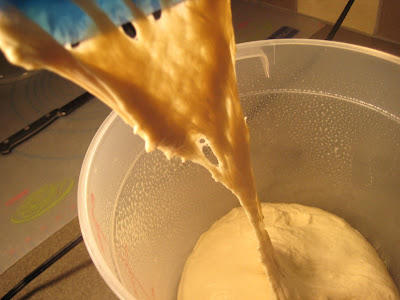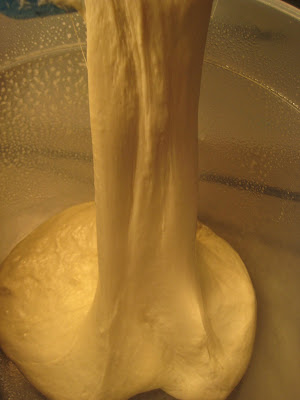Thank God for Talkers
I grew up at the knee of front-porch talkers, of people who could tell a story and make you believe you had been there, right there, in the path of the bullet or the train, in the warm arms of a new mother, in the teeth of a mean dog. The men, sometimes dog drunk, sometimes flush with religion but always alight with the power of words, could make you feel the breath of the arching blade as it hissssssssed past their face on the beer joint floor, could make you taste the blood in your mouth from the fist that had smashed into their own, could make you hear the loose change in the deputy's pocket as he ran, reaching for them, just steps behind.
The women in my world, aunts and cousins and grandmas and a girlfriend or two, could telegraph straight to your brain the beauty of babies you never touched, songs you never heard, loves you never felt. They could make you cry about a funeral you never saw, make you mourn for a man you had never met. They could make you give a damn about the world around you. They had a gift, one the rest of us who aspire to be storytellers can only borrow.
***From Somebody Told Me by Rick Bragg
I agree with Rick Bragg. Good storytelling is a gift. The best stories provide sustenance, a sort of biscuits and gravy for the soul. It's my hunger for stories - not food - that drives my addiction to reading blogs. During the course of the year, I've encountered many great stories in the blogosphere. The following are five of my favorite stories and a short excerpt from each:
- "Seeing Stars" by Marilyn over at Simmer Till Done. Marilyn churns out a quality product post after post. She gracefully uses words to present a passionate, warm, honest portrait of her world, and in the process she makes her readers feel truly at home. In this story, Marilyn tells an unromantic tale about her culinary internship at a five-star restaurant, and in the process, she reveals a truth about life: Sometimes it takes courage to quit.
I sat five minutes in the car, breathing frost in my wet, filthy whites. The restaurant window showed in my rearview mirror, catching a diner raising her glass and a man clinking it, smiling. I yanked down my hair and sped off to the highway, thinking quitter. You burned your fancy bridges. Schooling was what I’d come for and schooling was what I got. I would quit my way into a different kind of kitchen, reasoning that if this was it, what I had was something else.
- "A Sonic Awakening" by Aaron K at Xocoatal Express: A Journey in Chocolate, Culture & Food. In this story, Aaron tells the story of his first trip to a Sonic, and in the process he makes the commonplace extraordinary. If this story doesn't trip your trigger, read his post titled "The Mother, the Child, the Guru, and the Hershey Kiss"
Life drifting by the window on a summer evening. The hypnotizing gastronomical apparatus of eating a greasy chicken sandwich with a wet sticky lap was actually quite the experience I was hoping for. Was the food good....no it wasn't. Was the waitstaff courteous and prompt....no they weren't. Will I ever go back...you bet your ass I will. The heart of Tallahassee sails unfurled into the night for those willing to seek adventure.
- "Fabio and the Ivory Billed Woodpecker" by Rechelle over at The Country Doctor's Wife. This story exemplifies the quirky sense of humor you'll find at The Country Doctor's Wife on a daily basis . You can't go wrong with a story that takes place at a songwriters' camp in Arkansas and includes naked hippies.
The rest of the weekend was more of the same... which was a sameness that was so far from sameness that I have not been the same since.
- "Pork BBQ for the Soul" by Doug DuCap over at Huggining the Coast. I'm not a fan of restaurant reviews, but this one is soulful account of discovering a BBQ restaurant named Duke's.
My banker, Trent, glanced furtively through the glass wall of his office. Satisfied that no one was watching, he leaned across his desk slightly, indicating I should do the same. I drew in closer; when your banker wants to give you insider advice, you pay attention.
“Duke’s,” he said quietly. “It isn’t fancy, but if you want the real thing, that’s it.”
- "Thanks" by Sarah over at Fritter. I admire two things about Sarah's writing: First, she notices details that most individuals overlook. Second, her concise writing seems to always pack a punch. She does more with fewer words than most bloggers out there in the blogosphere. When she shares her food memories associated with her family, it's always a treat. This story is a perfect example.
Most of my early Thanksgivings were held out on Grammy's farm and to this day, even here in warm, humid South Florida, my mind associates Thanksgiving with cold fronts, straw bales, and Grammy's green Depression glass pitchers of iced tea. One of my earliest memories is the Thanksgiving my dad harnessed Grammy's quarterhorse, Lacy, to an ancient wooden wagon that Grammy housed in her garage. Lacy towed us around the house a few times, ears cocked back toward our boisterous group in the wagon as if to say, "I'm only putting up with this foolishness for the carrots."Wishin' you the best in '09.
muddywaters
P.S. I promise to post a recipe Friday.
























